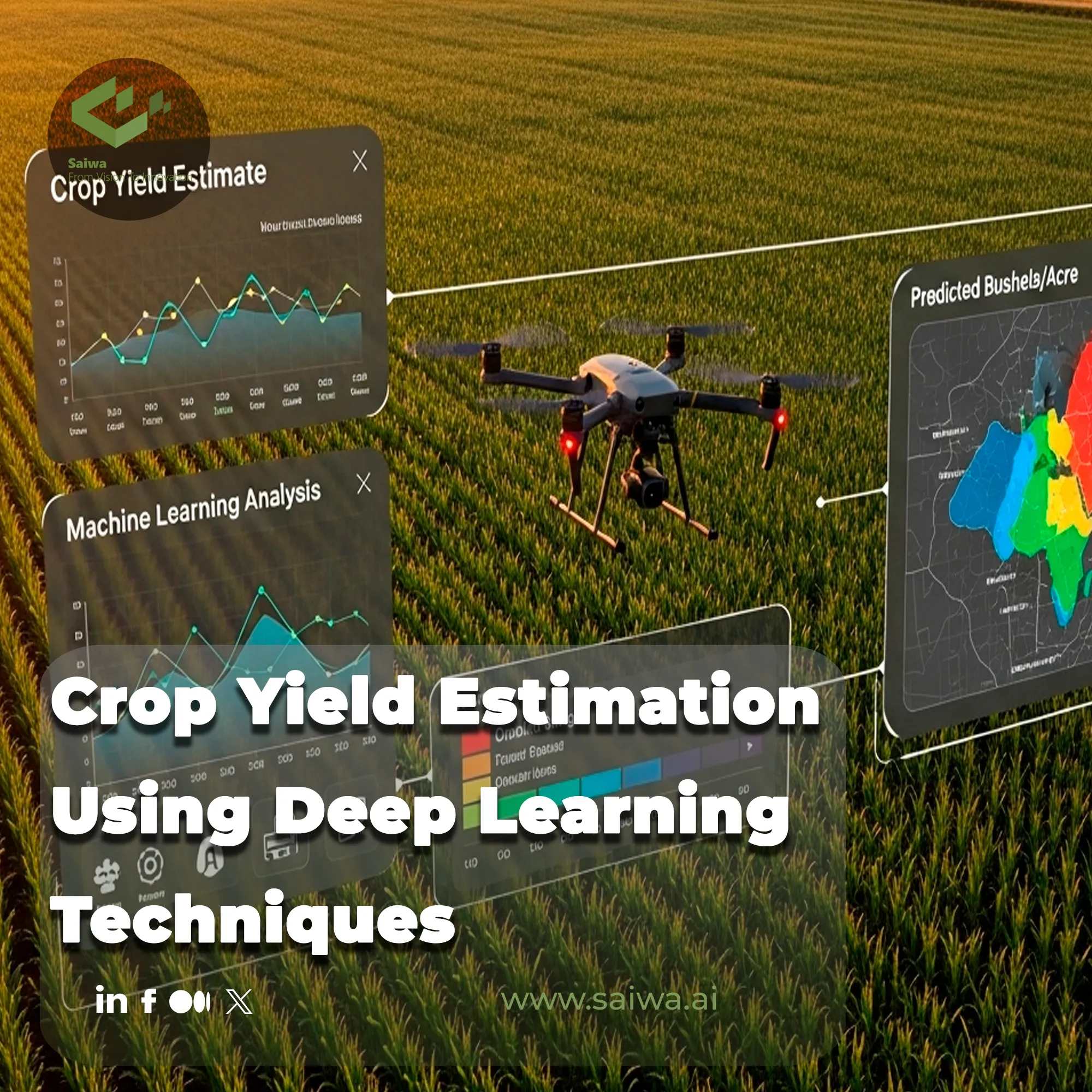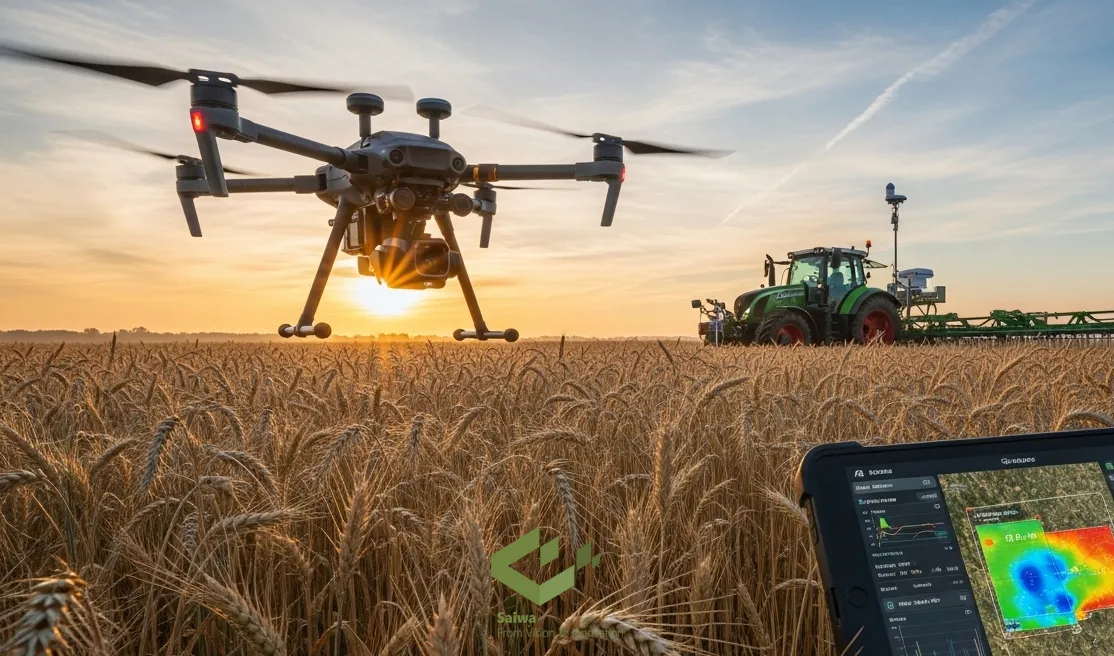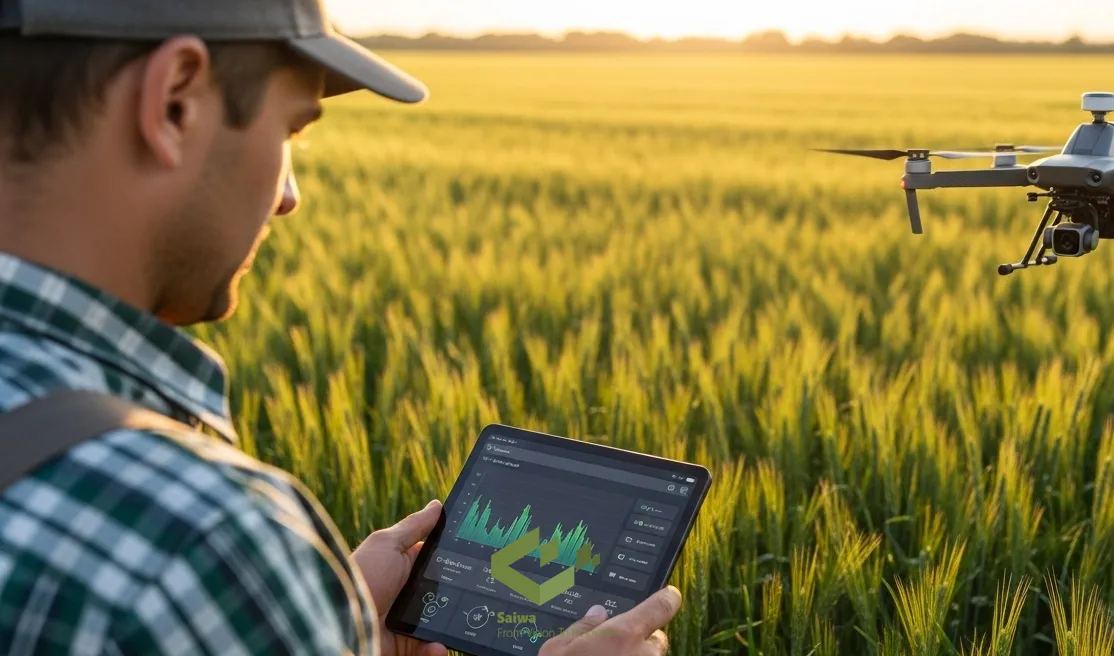Crop Yield Estimation Using Deep Learning Techniques

The world is growing, so we need better ways to grow food. Farmers need more than their gut feelings to deal with the challenges of today's farming. Technology can help with this. For this purpose, Crop Yield Estimation Using Deep Learning Techniques provides a powerful solution. It transforms large amounts of data into useful information. At Saiwa, we developed Sairone to help farmers use advanced AI in a practical way. This guide will explain the most important ideas and show you how these new technologies are changing agriculture today.
The Importance of Accurate Crop Yield Estimation
Accurate yield estimation is far more than an academic exercise; it is the financial and operational backbone of a modern farm. Precise forecasts empower growers to make critical, data-driven decisions that directly impact profitability and sustainability.
When you know what your fields will produce, you can optimize every step of the process. This foresight is essential for several reasons:
Strategic Planning: Reliable predictions enable better decisions on harvest timing, labor allocation, storage capacity, and securing favorable sales contracts before the market is flooded.
Resource Management: It allows for the precise application of resources like fertilizer and water, preventing waste, reducing environmental impact, and cutting operational costs. This targeted approach is also fundamental for effective Weed detection and management.
Global Food Security: On a larger scale, accurate national and global yield forecasts help governments and organizations anticipate food supplies, manage market stability, and prevent shortages.
What Makes Deep Learning Different from traditional methods?
Traditional yield estimation methods often rely on manual field sampling and simple statistical models. While useful, these techniques can be labor-intensive and struggle to capture the complex, interconnected variables that influence a harvest.
They often fail to account for the subtle variations across a single field, leading to unreliable projections. Deep learning marks a significant leap forward. Unlike linear models, deep learning architectures are designed to identify intricate, non-linear patterns within massive datasets automatically.
These systems analyze diverse inputs, including satellite imagery, weather data, and soil conditions, with a level of sophistication that was previously unattainable. For growers seeking more advanced and efficient methods of Crop Yield Estimation Using Deep Learning Techniques, this technology offers a transformative approach. Studies have demonstrated that certain deep learning models can improve yield prediction accuracy by up to 33% for corn compared to other AI methods, showcasing their superior ability to understand complex agricultural systems.
Deep Learning Architectures Used in Yield Estimation
The power of deep learning comes from specialized architectures, each suited for different types of agricultural data. Understanding their roles helps clarify how AI translates raw information into valuable predictions. Let’s explore some of the most effective models used today.
Convolutional Neural Networks (CNNs): Seeing Patterns from Above
CNNs are masters of image analysis. They function like a digital eye, processing satellite and drone imagery to identify spatial patterns such as plant density, growth stages, and signs of stress. This makes them perfect for tasks related to Plant health monitoring from an aerial perspective.
Recurrent Neural Networks (RNNs): Learning from Time Series Data
RNNs excel at understanding sequences. They analyze time-series data, like weather patterns or crop growth over an entire season, by retaining a "memory" of past events. This allows them to model how factors from earlier in the season impact the final harvest.
Hybrid Models
Hybrid models offer the best of both worlds. They typically combine a CNN's ability to extract features from images with an RNN's capacity to analyze those features over time. This dual approach provides a comprehensive view of both "what" is happening in the field and "when" it is happening.
Autoencoders and Deep Neural Networks: Simplifying Complexity
These networks are skilled at feature extraction from complex datasets. They can distill the most important information from multiple data sources, simplifying complex inputs to improve the accuracy and efficiency of the final prediction model.

Data That Powers Deep Learning in Crop Yield Estimation
A deep learning model is only as good as the data it’s trained on. The accuracy of modern forecasting relies on integrating diverse, high-quality data streams that together paint a complete picture of the agricultural landscape. The process of Crop Yield Estimation Using Deep Learning Techniques is fundamentally data-driven. Below are the essential data types.
Satellite and Drone Imagery
This high-resolution spatial data provides a top-down view of fields, offering invaluable insights into crop health and vigor that are invisible to the naked eye.
Vegetation Indices
Calculated from satellite data, metrics like the Normalized Difference Vegetation Index (NDVI) quantify the greenness and density of plant life, serving as a strong proxy for biomass and potential yield.
Weather and Climate Data
Information such as temperature, precipitation, and solar radiation is critical, as these variables directly control the biological processes of crop development throughout the growing season.
Temporal Data
Historical data on past yields, soil conditions, and management practices (like planting dates or fertilization schedules) provide crucial context and a baseline for model training.
Preparing the Data: Preprocessing and Feature Engineering
Raw data collected from the field and satellites is rarely ready for immediate use. It must first be carefully processed and refined to ensure the deep learning model can effectively learn from it. This preparatory phase is a critical step in building a reliable predictive system.
Cleaning and Organizing Raw Agricultural Data
This initial step involves structuring the collected data and correcting any obvious errors or inconsistencies to create a clean foundation for analysis.
Handling Missing Values and Outliers
Agricultural data often contains gaps or anomalous readings. Sophisticated techniques are used to intelligently fill in missing information and handle outliers that could otherwise skew the model’s predictions.
Normalization and Data Scaling for Model Efficiency
Data from different sources (e.g., temperature in Celsius, rainfall in millimeters) must be scaled to a common range. This ensures that no single variable disproportionately influences the model’s learning process.

Training and Optimizing Deep Learning Models
Once the data is prepared, the next phase is to build and refine the predictive model itself. This is an iterative process focused on maximizing accuracy and ensuring the model performs reliably in real-world conditions. A successful approach to Crop Yield Estimation Using Deep Learning Techniques depends heavily on this stage. Let's look at the key steps.
Choosing the Right Model Architecture
Selecting the appropriate architecture, whether a CNN, RNN, or a hybrid, depends on the specific crop type and the available data. There is no one-size-fits-all solution.
Training Strategies for Reliable Results
The model is "trained" by feeding it the prepared data. During this process, it learns the complex relationships between the inputs (like weather and imagery) and the outputs (crop yield).
Validation and Testing: Measuring Real-World Performance
After initial training, the model's performance is tested against a separate set of data it has never seen before. This validation step is crucial for verifying its accuracy and predictive power.
Cross-Regional and Cross-Season Evaluation
A truly robust model must perform well across different geographic regions and growing seasons. This evaluation ensures the model is generalizable and not just tuned to a specific set of conditions.
Sairone’s Role in Advancing Deep Learning for Accurate Crop Yield Estimation
At Saiwa, we understand that turning complex deep learning science into a practical tool is the most important step. Our Sairone platform is designed to do exactly that. Sairone is an integrated AI and drone imagery solution that automates the entire data-to-insight pipeline.
We handle the complexities of data processing and model management, delivering clear, actionable reports directly to farmers, agronomists, and environmental researchers. From assessing nitrogen content to providing precise Crop yield estimation, Sairone empowers you to make smarter, more profitable decisions without needing to become a data scientist.
Conclusion
The integration of artificial intelligence into agriculture is not a futuristic concept; it is happening now. By translating complex data into clear, predictive insights, these systems are building a more resilient and productive future for global food production. The journey of Crop Yield Estimation Using Deep Learning Techniques continues to evolve, and with practical platforms like Sairone, the power of this technology is more accessible than ever, ensuring a smarter and more sustainable harvest for everyone.
Note: Some visuals on this blog post were generated using AI tools.
